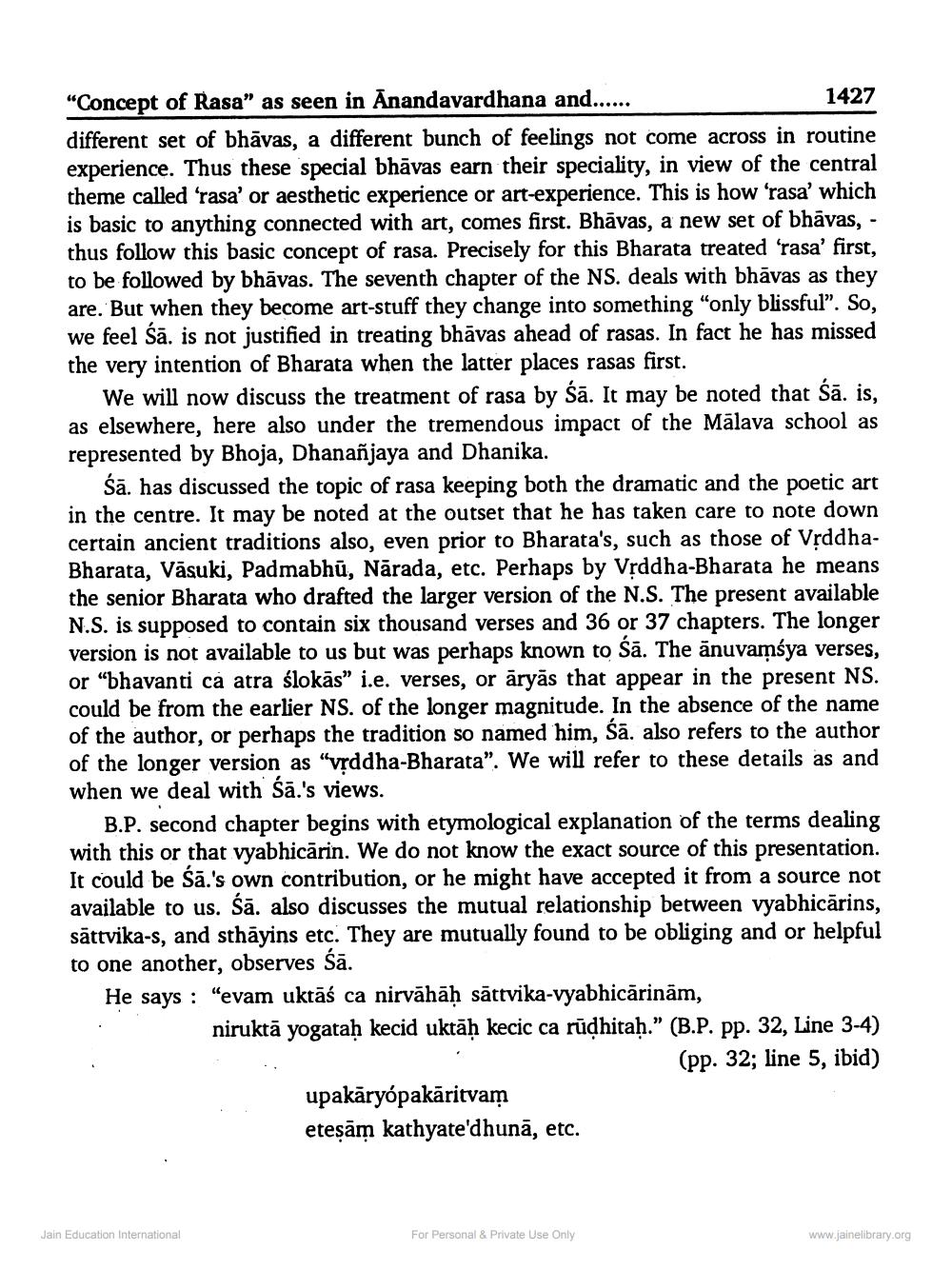________________
“Concept of Rasa" as seen in Anandavardhana and......
1427 different set of bhāvas, a different bunch of feelings not come across in routine experience. Thus these special bhāvas earn their speciality, in view of the central theme called 'rasa' or aesthetic experience or art-experience. This is how 'rasa' which is basic to anything connected with art, comes first. Bhāvas, a new set of bhāvas, - thus follow this basic concept of rasa. Precisely for this Bharata treated 'rasa' first, to be followed by bhāvas. The seventh chapter of the NS. deals with bhāvas as they are. But when they become art-stuff they change into something “only blissful”. So, we feel Śā. is not justified in treating bhāvas ahead of rasas. In fact he has missed the very intention of Bharata when the latter places rasas first.
We will now discuss the treatment of rasa by Śā. It may be noted that Śā.is, as elsewhere, here also under the tremendous impa ct of the Malaya school as represented by Bhoja, Dhanañjaya and Dhanika.
Śā. has discussed the topic of rasa keeping both the dramatic and the poetic art in the centre. It may be noted at the outset that he has taken care to note down certain ancient traditions also, even prior to Bharata's, such as those of VệddhaBharata, Vāsuki, Padmabhū, Nārada, etc. Perhaps by Vệddha-Bharata he means the senior Bharata who drafted the larger version of the N.S. The present available N.S. is supposed to contain six thousand verses and 36 or 37 chapters. The longer version is not available to us but was perhaps known to Sā. The ānuvamsya verses, or "bhavanti ca atra ślokās" i.e. verses, or āryās that appear in the present NS. could be from the earlier NS. of the longer magnitude. In the absence of the name of the author, or perhaps the tradition so named him, Śā. also refers to the author of the longer version as "vrddha-Bharata”. We will refer to these details as and when we deal with Sā.'s views.
B.P. second chapter begins with etymological explanation of the terms dealing with this or that vyabhicărin. We do not know the exact source of this presentation. It could be Sā.'s own contribution, or he might have accepted it from a source not available to us. Šā. also discusses the mutual relationship between vyabhicārins, sāttvika-s, and sthāyins etc. They are mutually found to be obliging and or helpful to one another, observes Śā. He says : "evam uktāś ca nirvāhāḥ sāttvika-vyabhicārinām, niruktā yogataḥ kecid uktāḥ kecic ca rūļhitaḥ.” (B.P. pp. 32, Line 3-4)
(pp. 32; line 5, ibid) upakāryópakāritvam eteşām kathyate'dhunā, etc.
Jain Education International
For Personal & Private Use Only
www.jainelibrary.org




